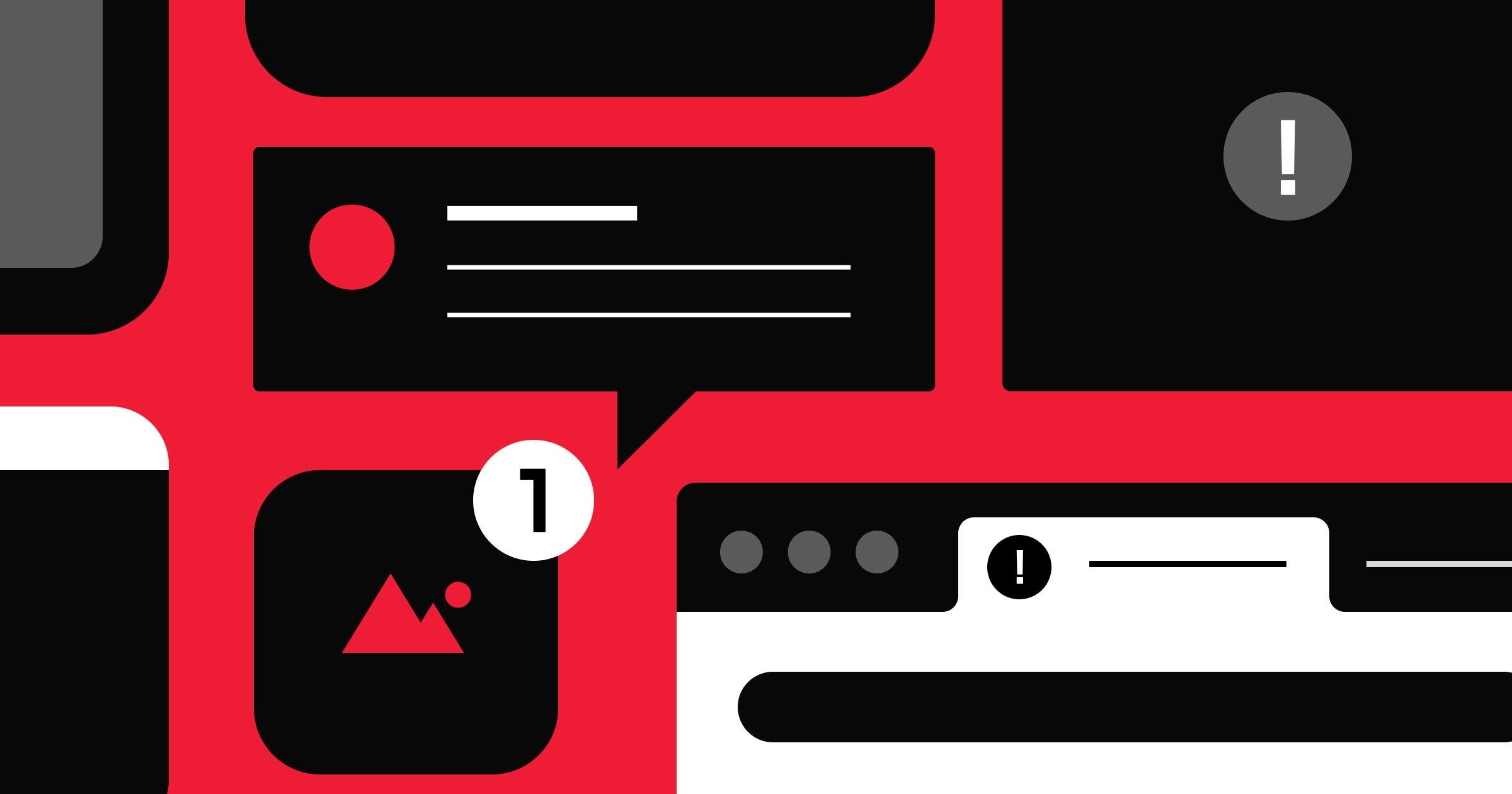B2B marketing doesn’t need to feel stale and dry. Try these B2B marketing strategies to reinvigorate your campaigns and maximize your budget.
B2B marketing is equal parts art and science. If you’re still relying solely on cold emails and trade show booths, it’s time to update your strategies. The modern-day B2B marketing playbook is constantly evolving, and staying ahead of the curve can mean the difference between surviving and thriving.
Whether you’re a seasoned in-house marketing pro or an agency-based marketing manager, you’re in the right place. Below, we’ll walk you through the latest B2B marketing strategies you need to stand out from the crowd.
What is B2B marketing?
B2B (business-to-business) marketing involves businesses selling products or services to other businesses. It’s about building relationships, establishing trust, and demonstrating value to other businesses.
Now, you might be thinking, "Marketing is marketing, right?" Well, not exactly. While B2B and B2C (business-to-consumer) marketing share some common ground, there are some key distinctions:
- Decision-making buying process: B2B purchases often involve multiple decision-makers and long sales cycles that can take months (or even years). B2C could be as quick as seeing an Instagram ad and hitting "Buy Now."
- Emotional vs. rational appeal: While B2C marketing often appeals to emotions, B2B marketing needs to appeal to both hearts and minds. You're not just selling a product — you're selling ROI, efficiency, and business growth.
- Relationship building: In B2B, the sale is just the beginning. Long-term relationships and account management make for lifelong customers and repeat business.
- Content complexity: B2B content often needs to be more detailed and technical.
B2B marketing starts with knowing your audience, and they’re not just a target corporate logo. You're not marketing to a faceless corporation — you're marketing to people within that corporation.
And to do that, you need to:
- Create detailed buyer personas — Identify the decision makers and their pain points.
- Map the buyer's journey — Understand the steps your potential clients take from realizing they have a problem to choosing your solution. Know the purchasing decisions they face and who gets the final say.
- Speak their language — Familiarize yourself with industry jargon so you can have more efficient conversation.
- Provide value at every touchpoint — Whether it's a blog post, a webinar, or a sales call, always ask yourself, "How is this helping my audience?"
Top 7 B2B marketing strategies
Here are the B2B marketing strategies you should implement to make the most of your marketing resources.
1. Audience personas
Create buyer personas. These aren't just generic profiles, they identify your customers behaviors, preferences, and goals.
Here's how to create effective buyer personas:
- Do your homework — Dive into your current customer data, conduct surveys, and talk to your customers.
- Go beyond demographics — Identify their daily challenges and long-term goals.
- Map their journey — Understand every step they take from "We have a problem" to "This solution is perfect!"
- Keep it real — Remember, there are real people behind these persona files and PDFs.
Use these customer personas to guide every aspect of your marketing strategy, from content creation to email campaigns. In B2B marketing, one size definitely does not fit all. The more you tailor your approach to your specific audience, the more likely you are to turn prospects into partners.
2. Content marketing
Content marketing isn’t just for B2C brands — your brand can use it, too. Create an enterprise content strategy to build brand awareness, establish authority, create relationships, and even entertain your audience.
Here are a few ways to create compelling content for your B2B audience:
- Mix it up — Blog posts are great, but don't stop there. Whitepapers, case studies, webinars, podcasts, infographics are all content formats you can try.
- Tell stories — Yes, even in your B2B content marketing strategy. Share customer success stories, behind-the-scenes glimpses, or even the occasional failure (and how you bounced back). People connect with stories, not just facts and figures.
- Make it actionable — Your content should leave readers knowing what their next step is, whether visiting your site or signing up for a demo.
- Optimize for search — Search engine optimization (SEO) isn't just for e-commerce sites. Use tools like Webflow's SEO features to make sure your content ranks well on search engines.
- Repurpose — That in-depth whitepaper? Turn it into a series of blog posts, social media snippets, and a webinar.
3. Lead generation
Leads are the lifeblood of your B2B business, but they don’t usually come to you — you have to meet them halfway with lead generation strategies. These strategies fill your sales pipeline with a steady stream of qualified buyers, reduce money wasted on spray-and-pray marketing tactics, and shorten your overall sales cycle.
Here are a few lead-generation tactics you can try:
- Gated content — Offer high-value gated resources, like ebooks, webinars, or industry reports, in exchange for contact information.
- Lead magnets — Create offers that solve immediate problems for your target audience. Think lead magnets like templates, checklists, or free trials.
- Webinars and virtual events — Host online events that showcase your expertise and provide real value.
- LinkedIn lead gen forms — Leverage LinkedIn's robust B2B targeting capabilities with pre-filled forms that make sign-ups simple and easy.
- Chatbots — Use AI-powered chatbots to engage visitors 24/7, qualify leads, and book meetings.
It’s never about quantity over quality — that’s a surefire way to overwhelm your sales team and tank your sales cycle.
Instead, use these strategies to attract the right leads:
- Define your ideal customer profile (ICP) — Know exactly who your ideal customer is before you start reaching out.
- Use progressive profiling — Gather information gradually instead of asking for everything upfront.
- Score your leads — Develop a system to prioritize leads based on their likelihood to convert.
- Nurture, nurture, nurture — Not every lead is ready to buy right away. Use email campaigns and targeted content to keep them warm until they're ready to take the plunge.
4. Email marketing
Email marketing isn’t going anywhere — especially when it comes to B2B marketing strategies. Unlike social media blasts, emails land directly in your prospect's inbox, and with metrics like open rates, click-through rates, and conversions, you can know the exact ROI of each campaign you send.
Here are a few B2B marketing tactics that’ll help you maximize your email marketing program:
- Segment — Break your email list into specific groups based on industry, job title, behavior, or stage in the buyer's journey.
- Personalize — Use dynamic content to tailor your emails based on the recipient's interests, past interactions, or pain points.
- Nail your subject lines — Make subject lines intriguing, value-packed, and concise. These are just as important as the headlines on your website.
- Provide value — Educational content, industry insights, or exclusive offers should be a regular part of your emails. Save the hard sell for your actual sales team.
- Optimize for mobile — Make sure your emails are responsive and look good on mobile.
- Test, analyze, repeat — A/B test everything from subject lines to send times. More data means better results.
Don't neglect your existing customers in your email strategy. Use email to provide ongoing value, upsell complementary products or services, and turn satisfied B2B customers into raving fans.
5. Social media marketing
At first glance, your brand might not seem like a fit for the social media stereotype of cat videos, food pics, and viral dances. In the professional world and on the right marketing channels, however, social media opens up networking opportunities.
Here are a few ways you can up your B2B marketing game on social media:
- Choose your social media platforms wisely — Not all social networks are created equal in B2B. Prioritize LinkedIn for reaching your target personas, and Twitter/X and Instagram for more casual social engagement.
- Make content that resonates with your target audience — Share content that resonates with your audience's professional interests, such as industry news, expert tips, and success stories.
- Engage, don't just broadcast — Respond to comments, join relevant discussions, and don't be afraid to reach out via direct message for collaboration.
- Leverage employee advocacy — Encourage your marketing team to share company content and insights.
6. Account-based marketing
Account-based marketing (ABM) focuses on your ideal clients. Instead of trying to appeal to everyone, this strategy tailors your marketing efforts to specific high-value accounts.
ABM is a marathon, not a sprint. It takes time to build relationships and see results.
Follow these steps to optimize your ABM strategy:
- Identify your target accounts — Look for companies that align with your ideal customer profile and have high potential lifetime value.
- Do your homework — Understand their pain points, challenges, and goals.
- Personalize everything — Tailor your messaging, content, and offers to each account.
- Coordinate your channels — Use a mix of targeted ads, personalized emails, social media channels, direct mail, and phone calls.
- Leverage technology — Use ABM platforms and marketing tools to track engagement, personalize at scale, and measure results.
7. B2B sales funnel optimization
Your sales funnel might have some leaks where you’re losing customers or wasting your marketing budget. Patching up these holes and optimizing your funnels helps smooth out the buyer’s journey and maximize your spend.
This isn’t a set-it-and-forget-it process. You’ll want to regularly evaluate your sales funnel before it becomes outdated.
Here’s how to kick off your optimization:
- Map out your current funnel — Before you can optimize, you need to document each stage of your funnel, from awareness to decision.
- Identify bottlenecks and drop-off points — Find the point where leads get stuck or leave.
- Create targeted content for each stage — Top-of-funnel leads need different nurturing than those ready to buy. Tailor your content accordingly.
- Implement lead scoring — Not all leads are created equal. Use a scoring system to prioritize your most viable prospects.
- Align sales and marketing — Double-check these teams are working together. Silos can damage the entire process.
- Use automation — Automate repetitive tasks, but don't lose the human touch. Find a balance between efficiency and personalization.



















The marketer’s website
Our free ebook exclusively for marketers. Discover how no-code eliminates developer bottlenecks and empowers modern marketing teams to truly own the website.
Emerging trends in B2B marketing
B2B marketing is always changing. Here are a few of the up-and-coming trends to keep your eye on and get ahead of the curve.
Personalization expectations
Today's B2B buyers expect experiences tailored just for them. Use data-driven insights to create personalized content, product recommendations, and communications. Your potential buyers want to know you know them and what they actually want.
Tools like can help you optimize your sites for conversion with scalable, AI-powered personalization and AI-driven copy suggestions.
AI and automation
AI in B2B marketing is revolutionizing lead scoring, customer segmentation, and predictive analytics. Analytic tools help turn your data into actionable insights, and Webflow Localization enables you to customize your website based on your visitors’ languages and locations.
Data-driven marketing
Use analytics to inform your decision-making, optimize your campaigns, and prove ROI for your campaigns. Tools like Google Analytics and Tableau give marketers all the data they need to make informed decisions.
Examples of successful B2B marketing campaigns
Sometimes, you just need a bit of inspiration to launch your own B2B marketing strategies. Let’s take a look at a couple of real-life examples of B2B marketing campaigns that nailed it.
Shopify's "Let's Make You a Business" campaign

Shopify, the ecommerce platform giant, launched its "Let's Make You a Business" campaign to transform its branding. Instead of selling a product, it sold a vision of success using social proof. They didn't just tell potential customers what they could do — they showed them.
Here’s what made Shopify’s campaign work:
- Empowering messaging — Instead of focusing on their features, Shopify positioned itself as a partner in their customers' success.
- Multi-channel approach — From YouTube videos to social media posts, they met their audience wherever they hung out online.
- User-generated content — They showcased real Shopify users, turning customers into their best marketers.
LinkedIn's "In It Together" campaign

LinkedIn proved they're more than just a place to update your resume with their "In It Together" campaign. They turned the spotlight on their diverse user base, showcasing how professionals from all walks of life use the platform.
What made LinkedIn’s campaign work:
- Emotional storytelling — They tapped into the universal desire for professional connection and growth.
- Diversity and inclusivity — By featuring a wide range of professionals, they broadened their appeal.
- Cross-platform integration — The campaign seamlessly integrated TV ads, social media, and on-platform content.
Launch cohesive B2B marketing campaigns with Webflow
Transforming your B2B marketing game can feel overwhelming, but you don’t have to go it alone. Webflow can help you build, launch, and grow websites that turn visitors into customers.
Don’t just take our word for it — see for yourself. Contact our sales team to get a first-hand look at the Webflow platform and everything it can help you do.

Webflow Enterprise
Trusted by over 300,000 of the world’s leading brands, Webflow Enterprise empowers your team to visually build, manage, and optimize sophisticated web experiences at scale — all backed by enterprise-grade security.































